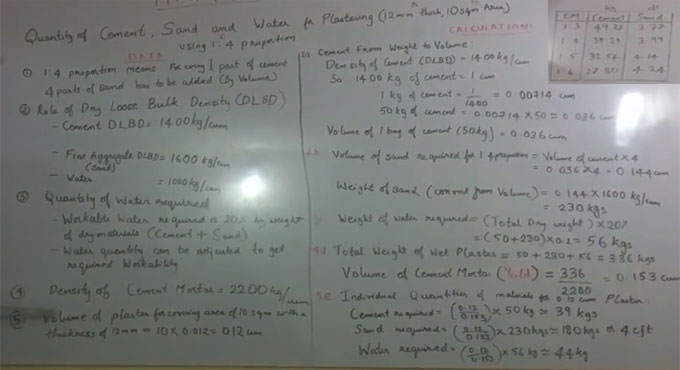TUTORIALS
How Much Water, Sand and Cement Is Needed For 12 millimeter Thick Plastering?

Plastering is performed on the walls to eliminate surface defects, keep line level and placement. Along with that it also appears as a protecting coating for exterior walls. Cement paste, Gypsum paste and Lime paste are the regularly utilized cementing substances for home constructions. Cement paste is created by combining cement and sand in the extent needed. Cement paste is utilized to both inner and outer walls to provide them an even exterior.
How to Compute Cement and Sand Needed for Cement Coating:
To come upon the amounts of Cement, Sand and Water needed for coating job, we have to comprehend on what characteristics these amounts rely on.
a. Amount of Plaster needed: Quantity of Plaster can be concluded through multiplying the region of plastering to be completed and width of cement (12 millimeter in this instance)
b. Mix Ratio of Cement: Mix ratio indicate the proportion of quantity of Cement to the Sand utilized in the blend. Plaster of mix ratio 1:4 indicates that it comprises one portion of cement and 4 portions of sand by quantity. As the quantity of cement and sand modifies with the modification in the mix proportion, it is one of the essential components in calculating the amounts.
Technique – 1: DLBD technique to compute Cement, Sand and Water needed for Plaster (1:4)
For computation objectives, let’s presume that the region that requires to be cemented is 100 square feet (10 feet X 10 feet wall) and a Plaster of Mix ratio 1:4 (cement : sand) is utilized.
We must make use of DLBD technique (Dry Loose Bulk Density) in calculating the ratios. This is the highly correct technique because it explains the differences in the Loose Bulk Density. Loose bulk density could differ according to the position available substances.
Move - 1: Compute the weights of materials needed utilizing bulk densities.
Plaster of 1:4 [Cement: Sand] (Volume ratio)
Quantity of 1 Bag of Cement (50 kilograms) = 36 liters or 0.036 cum (cement loose density equal to 1440 kilograms/cum)
Quantity of Sand needed (utilizing 1:4 ratio) = 0.036 x 4 = 0.144 x 1600 = 230 kilograms (contemplating sand dry bulk density equal to 1600 kilograms/cum.)
Typically about 20% of water by mass of the whole dry material is blended in the mixture to accomplish the demanded applicability.
Water needed = Weight of whole dry material x 20% = (50+230) x 0.2 = 56 liters = 0.056 cum
To gather more information, watch the following exclusive video tutorial:
Lecturer: HAPPHO

